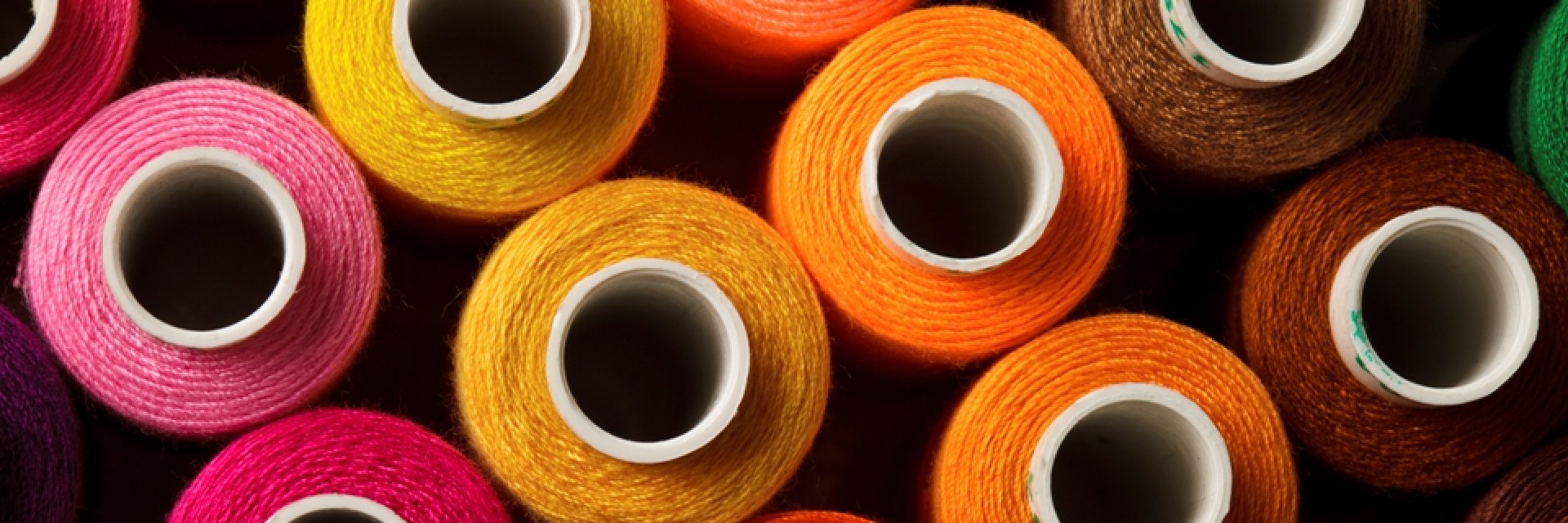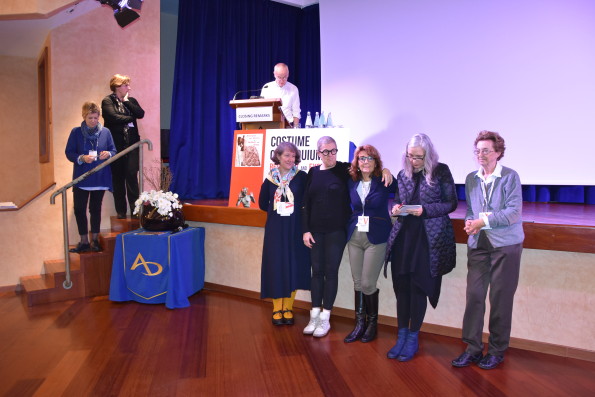“So I have been asked to make a few closing remarks. To this fifth Costume Colloquium on the theme of: Restraint and excess in fashion and dress. Restraint and excess, well we’ve certainly had a lot of that, and I am not yet talking about the papers!
We have all enjoyed the excessive hospitality that the Colloquium and its promoter the Fondazione Romualdo del Bianco/Life Beyond Tourism as always provides.
The receptions and refreshments have been superb, and I know personally that I could have exercised little more restraint when knocking back my fifth coffee provided by the excellent baristas and coffee roasters who have been serving us in the breaks!
As usual the organisers, staff and technicians have, during the Colloquium, been excessive in their attention to detail and diligence organising excursions and technical AV assistance.
The Ferragamo museum once again provided a marvellous treat, showing us around their latest exhibit and giving us a copy of the superb catalogue.
Commencing with the reception at the beautiful Palazzo Coppini we were prepared for the excesses to follow by the display of truly creative student work from Chicago under the guidance of Gillion Carrara responding to the theme of the Colloquium.
We have also had a book launch, and I would like to extend special thanks to Bloomsbury for helping to organise this, shopping tours and a snapshot of the excessive lifestyle of the Actons at the stunning Villa La Pietra and we thank New York University for this.
So, in between an excess of food, drink and shopping we have had a few papers.
And what papers! No restraint here in terms of scholarship, new information and sheer enjoyment!
These have asked us to consider whether the wearing of corsets was truly a form of restraint, or indeed a way of asserting female agency, just as the crinoline demarcated a specific female space and incidentally provided a great way of smuggling stolen food and drink!
Did removing the corset imply promiscuity, whether by Mother Hubbard wearers or Quakers? Or act as a progressive demonstration of the resistance to the vagaries of fashion? And providing medical extenuating circumstances for not following the latest fashion as occurred during the visit of Princess Louise to Canada, is something that could be usefully reintroduced today perhaps.
The construction of identity through excessive or restrained modes of dress introduced us to a remarkable line up including the memorable image of Dener on his throne surrounded by his models, Raymond Duncan sandal-shod and home spun, and a whole pantheon of entertainers from Bryan Ferry dressed in Anthony Price, Carmen Miranda in fruit, to Perra in drag and Cab Calloway in his zoot suit.
Their excesses, we learnt, were matched by the awe-inspiring expenditure on personal wardrobes made by Edith Stuyvesant and her clothes of gold, Empress Zita’s coronation robes, Queen Sirikit’s delicious collection of Balmain and Lady Delamere who, according to Jock was always ‘beautifully mounted’!
Lumps and bumps, whether naturally occurring during pregnancy, or artificially produced by means of belly padding for the Regency fashion victim, resurfaced again in the work of Rei Kawakubo and brought us back to a consideration of what goes on underneath clothing, impossibly high chopines perhaps?
Restraint of course comes with its own excesses, whether that be the excess of regulation levied against Medieval hermaphrodites, the sumptuary legislation imposed on 16th and17th century inhabitants of Dubrovnik, or mourners in Spain.
A call for restraint, or perhaps to jam the printing presses of fashion retrospective catalogues, was enthusiastically responded to, and equally impassioned was the plea for an understanding of the complexities of brand Islam.
What struck me especially during the Colloquium was the deeply sensual and excessive experiences of restraint or minimalism – Elizabeth Hawes’ socialist ideals nevertheless led her to produce exquisite clothes, the Soviet regime was responsible for some of the most beautiful printed textiles of the 20th century and while you may adhere to the tenets of Quakerism it appears the road to simplicity is bedecked with the finest of fabrics, and of course the extravagance of caviar, baked potatoes and cocaine should only be enjoyed in restrained silk jersey and pure silver.
It was especially gratifying to hear a number of papers considering menswear, and I did wonder whether a full-body metal corrective cage was not too high a price to pay to achieve the ideal dandy’s body, and I would certainly curb some of my excesses if it meant that I could afford some of the exquisitely restrained tailoring of Brioni we were treated to!
And so perhaps coming away from this marvellously excessive Colloquium we should all review our own wardrobes and at our next debutante ball avoid the risk of turning up in the same outfit as someone else, and throw on a Mother Hubbard gown, wrap a Fraser Taylor textile around our towering 18th century hairstyle a la Carmen Miranda, risk smelling like a whore and drench ourselves in Scoundrel Musk, toss on some archaeological revival jewellery and hold our arms at right angles like a Greek frieze (providing we have worked on our biceps at the gym!) and shuffle off to dinner and the excessive delights of Officina Profumo.
Thank you”

